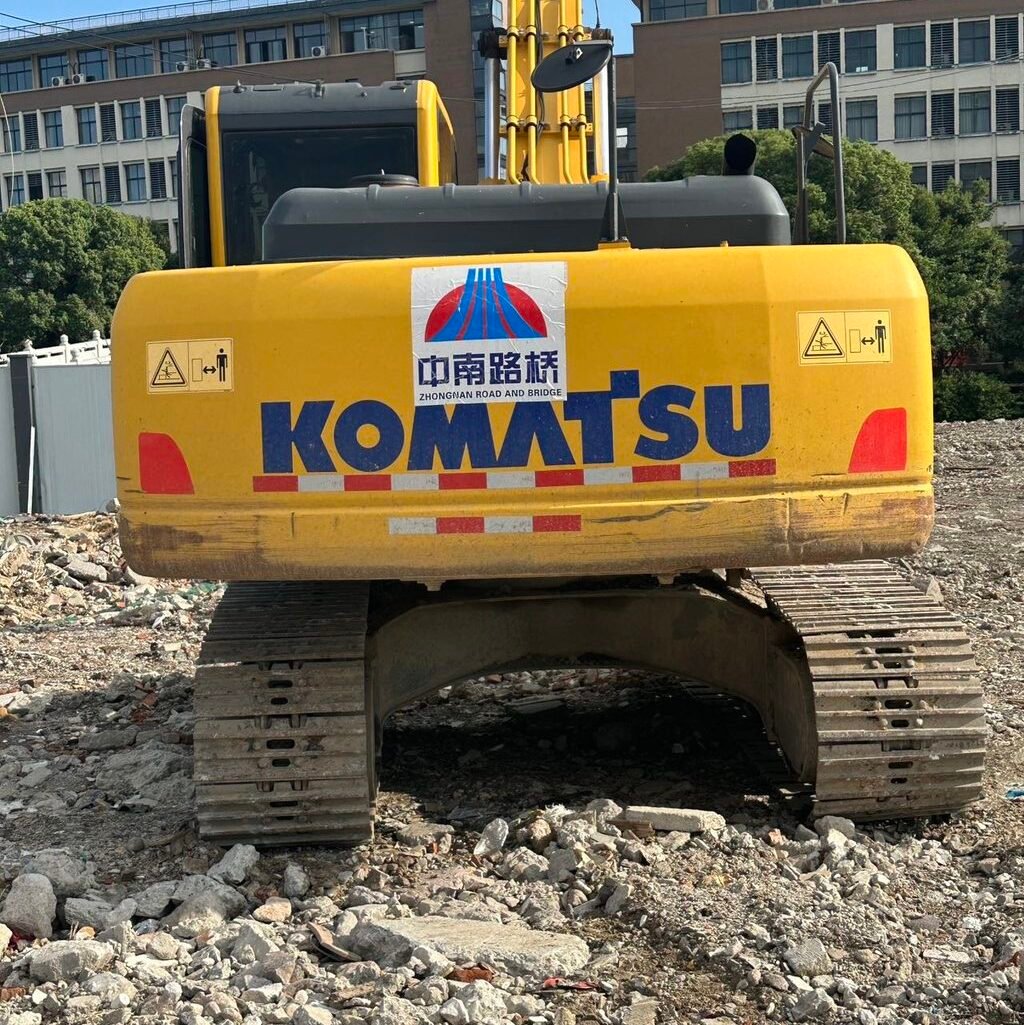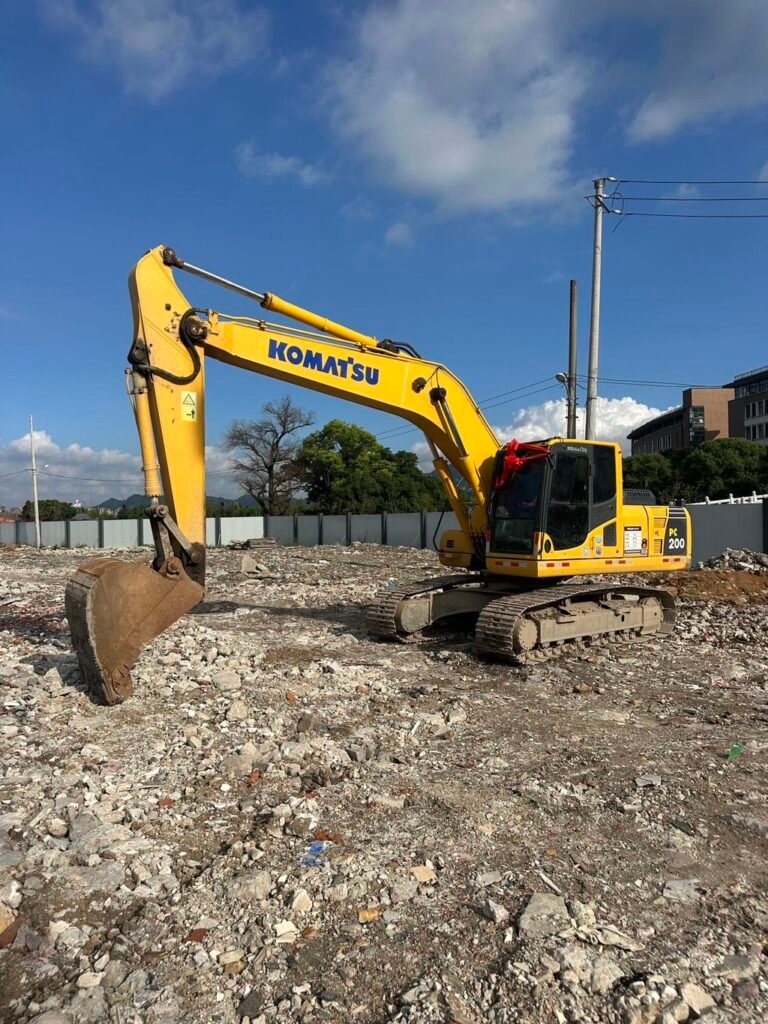I. Introduction
- Background: Risks and Challenges in Transporting Excavators
- Excavators, as heavy machinery, involve various risks during transportation, including potential damage, loss, delays, and associated legal liabilities. These risks can lead to direct financial losses and impact project timelines, ultimately affecting customer trust and the company’s reputation.
- Purpose and Significance: Importance of Ensuring Safe and Timely Delivery of Excavators
- Selecting the appropriate transportation method and insurance company is crucial for ensuring the safe transport of excavators. By making informed choices, companies can effectively minimize transportation risks, control costs, and enhance efficiency, ensuring timely delivery of equipment and improving project success rates and economic benefits.
II. Choosing the Transportation Method
1. Overview of Common Transportation Methods
- Road Transportation
- Advantages: Road transport offers high flexibility and can adapt to diverse transportation needs. Equipment can be delivered directly to the construction site, minimizing transfer steps and saving time and costs. Road transport is ideal for equipment that needs to be moved frequently.
- Applicable Scenarios: Suitable for short-distance transport and transfers between urban construction sites. By selecting appropriate vehicles (such as flatbed trucks or low-bed trailers), companies can effectively reduce the risk of damage during transport.
- Water Transportation
- Characteristics: Suitable for long-distance and bulk transport, typically conducted via ships, making it ideal for large-volume shipments.
- Advantages: Generally lower transportation costs, capable of carrying substantial amounts of equipment, and suitable for interprovincial or international shipping. Water transport also has environmental advantages, making it suitable for eco-friendly transportation needs.
- Challenges: Subject to weather conditions, port facilities, and shipping times, which may lead to delays. Therefore, careful planning and good communication with relevant ports are essential.
- Air Transportation
- Advantages: Air transport is fast, allowing equipment to reach its destination in the shortest time, making it suitable for urgent needs.
- Applicable Scenarios: Ideal for critical situations where equipment is urgently needed or project deadlines are tight, especially for high-value, small-volume items.
- Challenges: Higher costs compared to other methods, usually not suitable for bulk shipments, requiring careful consideration of cost versus speed of delivery.
2. Evaluation Criteria for Transportation Methods
- Cost: Comparison of Costs for Different Transportation Methods
- Companies should evaluate the total costs of transportation based on their budget, including transport fees, loading and unloading costs, and insurance premiums to ensure compliance with financial constraints while meeting transport needs.
- Time: Consideration of Transportation Timeliness
- It is important to select a method that meets project timelines, ensuring that equipment arrives when needed to avoid impacts on construction schedules. For time-sensitive projects, transport plans should be developed in advance, considering potential delays.
- Safety: Risk Management During Transportation
- Evaluate the protective capabilities of different transportation methods regarding equipment safety. Equipment should be transported using suitable tools, such as shockproof and waterproof vehicles, to ensure its safety during transit. Additionally, it is essential to choose transporters with professional experience and a good service record.
- Adaptability: Suitability of Transportation Methods for Terrain and Environment
- Analyze the applicability of different methods in specific environments, such as mountainous, urban, or port areas. Assessing transportation routes for traffic conditions, road quality, and other factors is crucial for optimizing transport plans.

III. Choosing the Insurance Company
1. Understanding Types of Insurance
- Cargo Transportation Insurance
- Coverage: Cargo insurance protects against loss or damage during transport, including total loss (complete damage or loss of equipment) and partial loss (partial damage). Companies should select appropriate insurance types based on equipment value and transportation risks to ensure adequate coverage.
- Selection Criteria: Evaluate equipment value, transport routes, and potential risks to choose suitable insurance options. In high-risk environments, more comprehensive insurance coverage may be necessary.
- Liability Insurance
- Coverage: Liability insurance protects transporters against legal liabilities that may arise during transport, such as third-party losses from accidents. This is critical for safeguarding the financial security of the company in case of an incident.
- Importance: Ensuring that the transporter’s liability is adequately protected helps avoid high compensation claims due to accidents, thereby safeguarding the company’s legal rights and reducing the risk of legal disputes.
2. Evaluation Criteria for Insurance Companies
- Reputation and Credibility: Selecting a Reputable Insurance Company
- Assess the market reputation of insurance companies by reviewing customer feedback and industry reputation to ensure a reliable partnership. Gathering information through online research, industry events, and recommendations from peers can be beneficial.
- Insurance Terms: Close Examination of Insurance Policies and Coverage
- Understand the specifics of insurance policies to ensure coverage against potential risks during transport. Avoiding hidden clauses that may complicate claims is essential. Companies should communicate clearly with insurance providers to ensure a mutual understanding of the terms.
- Claims Efficiency: Evaluating the Claims Process and Efficiency of Insurance Companies
- Choose insurance companies known for quick and convenient claims processes to ensure prompt compensation in the event of a loss, minimizing financial impact on the company. Understanding historical claims cases of the insurer can assist in making informed choices.
IV. Integrated Considerations and Decision-Making
1. Coordinating Transportation and Insurance
- Aligning Transportation Methods with Insurance Types: Minimizing Risks
- Select appropriate insurance based on the chosen transportation method to enhance overall risk management. For instance, if water transportation is selected, marine cargo insurance would be essential to address maritime-specific risks. Ensure that insurance terms align with the transportation method to avoid disputes during claims.
- Developing Emergency Plans: Preparing for Potential Issues
- Develop detailed emergency plans and response processes for potential incidents during transport (such as equipment damage or accidents) to ensure rapid response capabilities. Plans should include procedures for various unexpected situations and clearly define responsibilities.
2. Implementation and Feedback
- Monitoring During Implementation: Ensuring Smooth Transportation
- Maintain regular communication with transporters throughout the transportation process, tracking progress to ensure timely delivery and addressing issues as they arise. Utilizing transport management software and GPS tracking systems can enhance monitoring capabilities and provide real-time status updates.
- Post-Transport Evaluation: Summarizing Lessons Learned
- Conduct a thorough evaluation of the transportation process, assessing the effectiveness of the chosen methods and insurance. Identify areas for improvement to inform future transport strategies. Regularly reviewing and updating transportation and insurance strategies ensures continued relevance and effectiveness.
V. Conclusion and Recommendations
- Key Takeaways: Reiterating the Importance of Choosing the Right Transportation and Insurance
- The critical factors for ensuring the safe and smooth transportation of excavators lie in selecting the right transportation method and insurance, which can significantly reduce transportation risks and enhance project execution efficiency.
- Recommended Measures: Specific Suggestions for Selecting Transportation and Insurance
- Companies should consider costs, safety, timeliness, and adaptability when selecting transportation methods to make informed decisions. Establishing long-term partnerships with reliable transporters and insurers can enhance overall efficiency and safety. Regularly reviewing and assessing transportation and insurance strategies facilitates continuous improvement, ensuring the success of future projects. Companies should also invest in employee training to improve awareness of transportation risks and insurance knowledge, enhancing overall management capabilities and encouraging staff to contribute improvement suggestions for more systematic transportation management.



